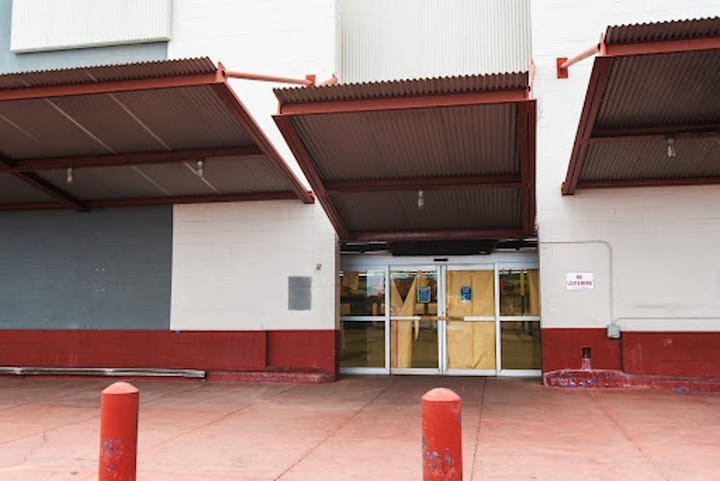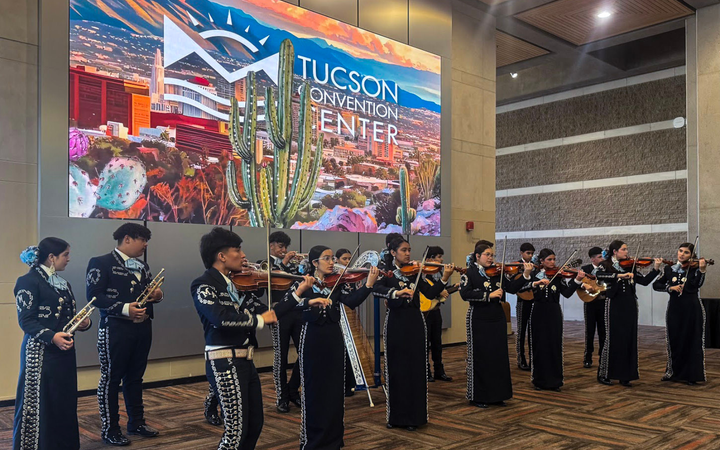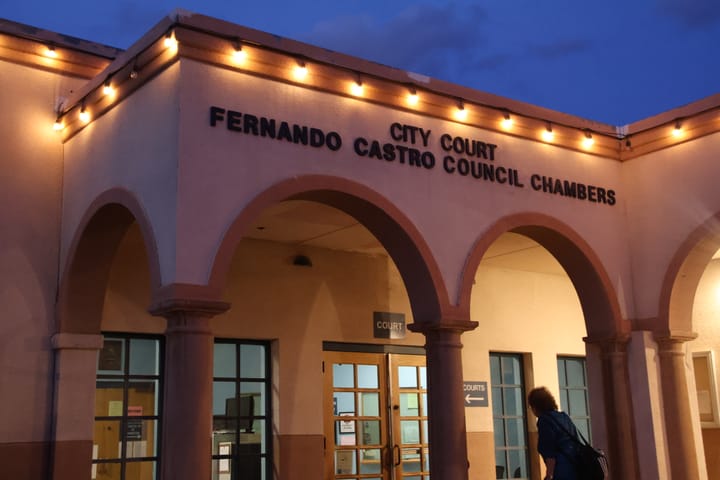Data center’s environmental impact raises alarm in Pima County
Pima County approved a billion-dollar AI data center project amid concerns over its significant water use and environmental impact in the drought-prone region.
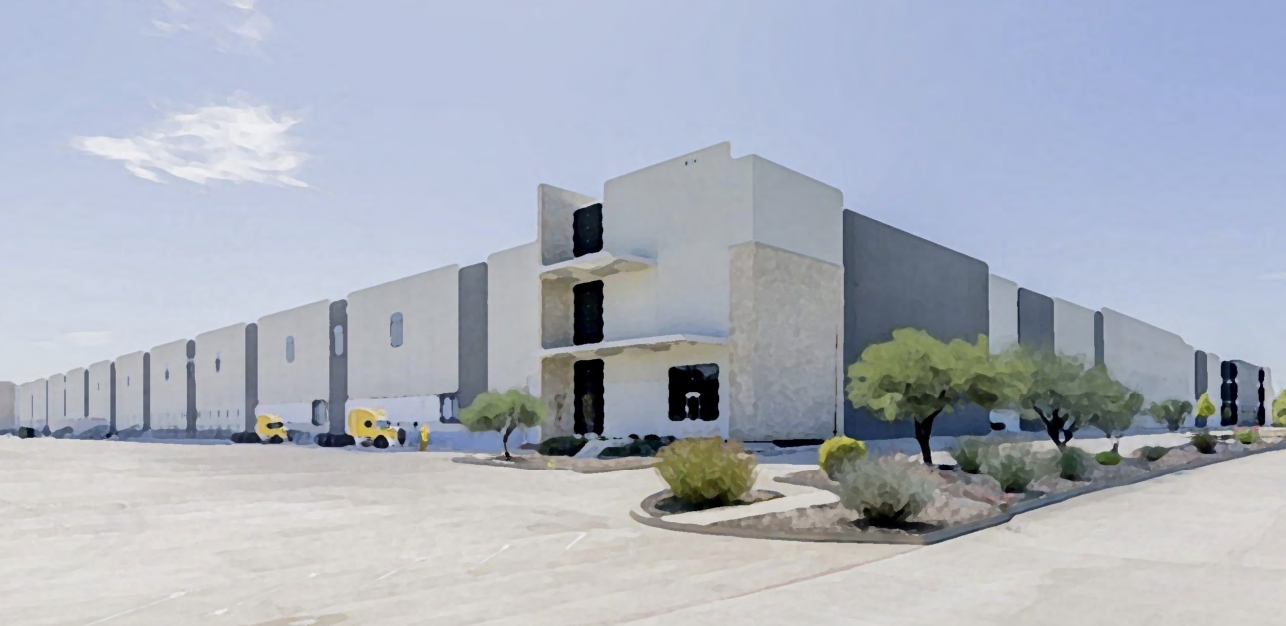
The approval of a billion-dollar AI data center that could use up to 5 million gallons of water a day in Pima County has intensified concerns about its environmental impact in an already water-stressed desert region.
On June 17, Pima County supervisors approved the sale of 290 acres of desert to Project Blue by a vote of 3-2, with District 3 Supervisor Jennifer Allen and District 5 Supervisor Andres Cano opposing the sale.
“We’re not just building in the desert, we’re building on a legacy,” Cano said during the meeting. “Generations of Tucsonans have worked to protect our water, preserve open space and grow responsibly and we owe it to them to get this right.”
The plot of land is located north of the Pima County Fairgrounds within the Southeast Employment and Logistics Center. The project is in partnership with Tucson Electric Power and Beale Infrastructure.
“We’ve had 20 unused acres of land situated in a growing region out in the southeast that have been vacant and not utilized to their fullest potential,” said District 4 Supervisor Steve Christy during the meeting. “We will be getting $20 million for this sale.”
The first phase of the project can support up to four data center buildings, with the potential to fit up to 10. The first building is expected to be operational in 2027.
According to an independent economic impact study, the project is expected to generate $3.6 billion in capital investment over several years and $250 million in total tax revenue.
“Data centers are critical infrastructure,” said Keri Silvyn, a partner at the law firm Lazarus and Silvyn. “They typically consist of a building that houses servers.”
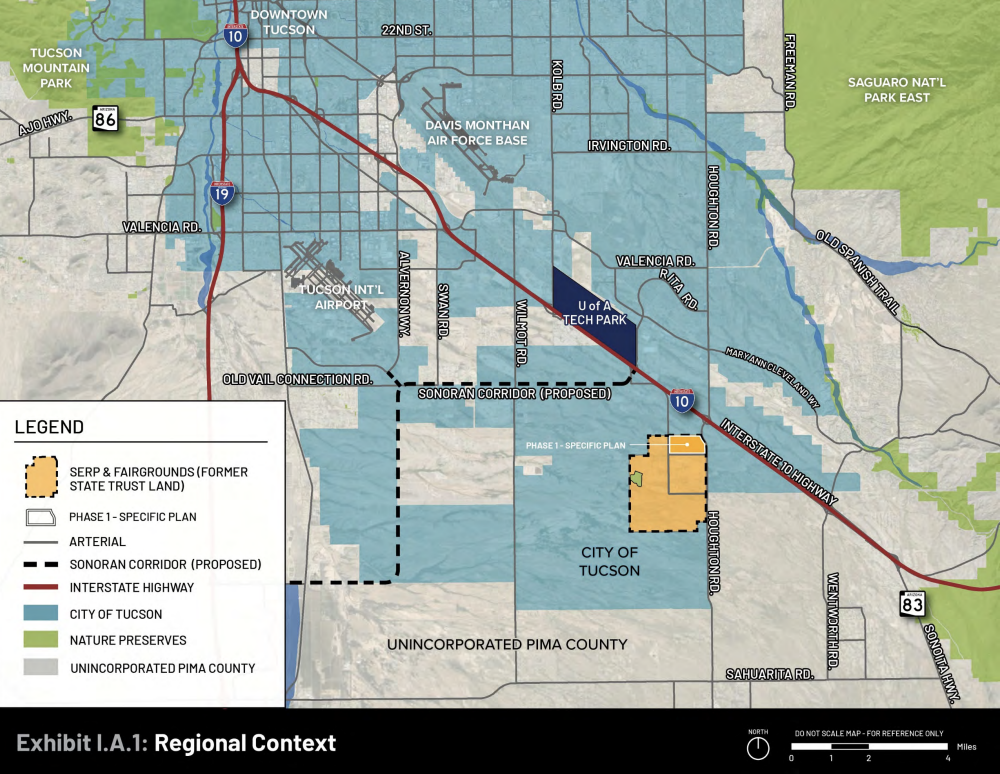
Additionally, the data center will generate 180 new full-time jobs in 2029 with an average salary of $64,000 a year and 3,000 direct construction jobs.
“It’s the physical backbone of the internet,” Silvyn said.
However, the data center’s daily water use, estimated between one and five million gallons, raises concerns, as it would become Tucson Electric Power’s largest single customer. Data centers consume large amounts of water to cool down its servers.
“I believe this land sale is deeply shortsighted,” said Andrew Shipley, a Tucson resident who recently moved back to town after earning his bachelor’s degree in environmental engineering.
Shipley, who is pursuing a career as a water and wastewater engineer, spoke during the meeting, urging supervisors to reconsider the purchase.
“As we’re all aware, Arizona and the entire Southwest are facing critical water shortages, particularly the Central Arizona Project is no longer secure as we once thought it was,” he said.
Project Blue and Beale Infrastructure will fund major energy and reclaimed water infrastructure improvements in line with Tucson’s One Water 2100 plan. The project consists of an 18-mile purple pipe that will expand access to reclaimed water and a 30-acre recharge aquifer site. The project could take about two years.
“It’s going to provide an opportunity for existing customers currently along the line to use,” Silvyn said.
But Shipley said he thinks the reclaimed water could be better put to other uses.
“Particularly for potable systems either through recharge of our groundwater or through direct potable reuse,” he said.
Beale Infrastructure has committed to fully offset its water consumption by funding projects that restore water quantity, improve quality, and enhance access within the Tucson watershed. Tucson Water has also designated a specific amount of potable water for Project Blue to use during the construction of the pipeline.
“We are given a deadline. These deadlines are laid out in the development agreement,” said Christina Castler, director of water for Beale Infrastructure.
She said the potable water will only be used for industrial purposes.
Project Blue has three main points for maintaining sustainability: investing in renewable resources, operational efficiency and water replenishment.
The data center plans to use cooling technology with industry-leading energy and water efficiency and operate “solely” with outside air during the night and cooler months.
Ten years ago, data centers used about 20 megawatt-hours per month; now newer centers focused around AI consume up to 100 megawatt-hours per month, said District 3’s Allen.
“Data centers are not new in Arizona by any stretch of the imagination,” she said.
There are more than 60 in and outside the Phoenix area using about 177 million gallons of water a day, consuming 7.4% of Arizona’s total energy. Outside of Arizona, there are more than 3,000 data centers nationally and internationally, Allen said.
“There’s clearly a need for data centers, but I think the fundamental question is where and where is dependent on what resources are available,” she said.
She said the decision is tough because Tucson needs more quality jobs, but there’s always a clash between development and the environmental impact, asking about the project’s commitment to clean energy.
“We are continuing to move through the energy transition. We have a net-zero carbon emission goal for 2050, so we have to continue on this path,” said Eric Bakkon, vice president of system operations and environment for TEP.
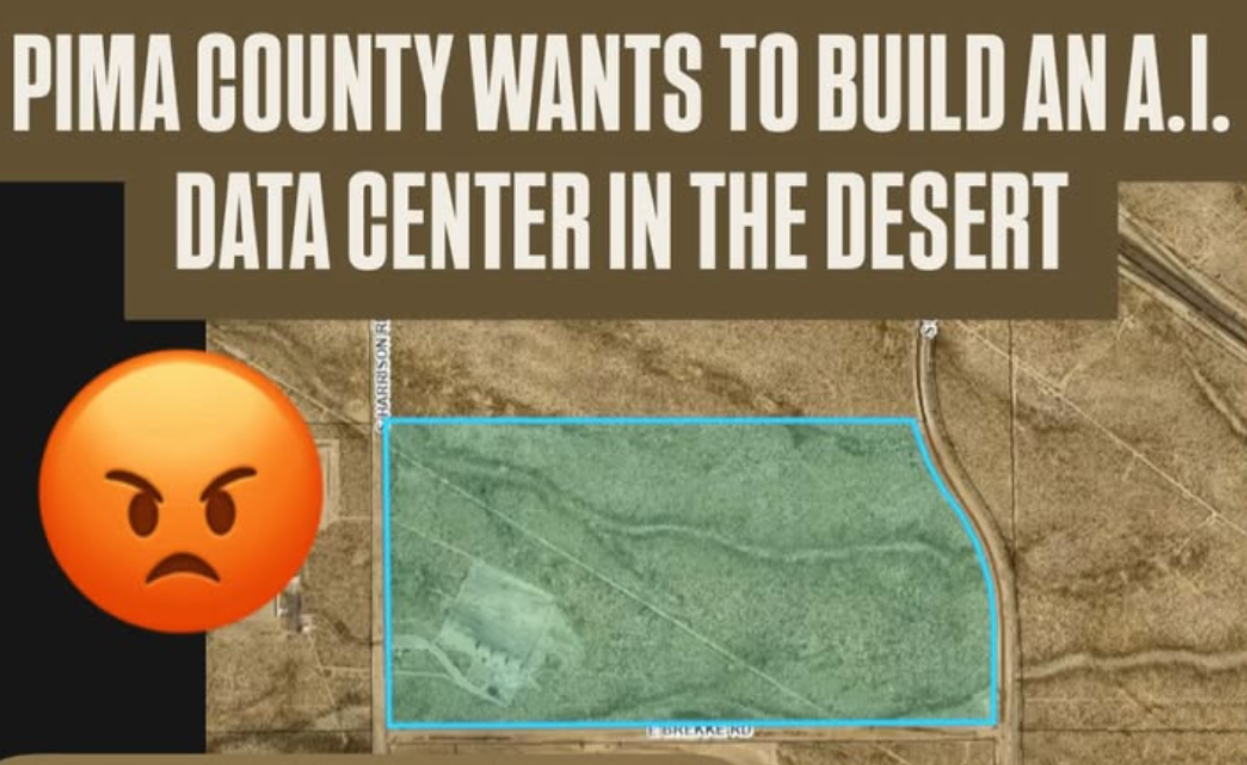
Bakkon said the project aligns with Pima County’s 2023 integrated research plan, which emphasizes expanding renewable energy sources such as solar, wind and storage.
With this commitment and use of more renewables, TEP will need to find a way to support the amount of renewable energy that is going to be brought into the system. One potential solution is increasing its use of natural gas.
“The intermittent power needs to have a backup and today those backups are storage as well as natural gas,” he said.
TEP and Project Blue’s agreement will be made public once it’s filed and approved by the Arizona Corporation Commission.
While Beale and Project Blue say they’re committed to sustainability, the project faces opposition.
Hours after the supervisors approved the land sale, Supervisor Matt Heinz, who previously voted in support of the sale, called for a reconsideration of the vote following Tucson Electric Power’s surprise announcement of a proposed rate hike.
He’s not alone in his concerns. Mutual aid group Community Care Tucson posted on Instagram ahead of the meeting, urging followers to contact supervisors and speak out against the project.
"As someone with expertise on AI and its social and environmental impacts...I cannot overemphasize how catastrophic this would be," Elliot Ramo wrote on Instagram. "That type of water usage is criminal anywhere, but it’s especially horrifying in the...desert on these unceded and sacred ancestral homelands."
Community members echoed Ramo's concerns during the meeting.
“As a state, we already struggle to effectively manage water usage in a way that doesn’t lead to alarming depletion,” Tucson resident Emily Arba said during the meeting.
Arba said she knows there’s a benefit in economic development, but it shouldn’t outweigh the cost in water, a finite resource.
“I would hope that morality is worth more than money,” she said. “I hope we can do the right thing for the sake of it.”
Arilynn Hyatt is a journalism major at the University of Arizona and Tucson Spotlight intern. Contact her at arilynndhyatt@arizona.edu.
Tucson Spotlight is a community-based newsroom that provides paid opportunities for students and rising journalists in Southern Arizona. Please consider supporting our work with a tax-deductible donation.

